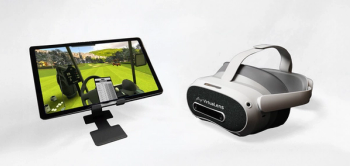
Pushing the boundaries with monofocal toric IOL
Lens is offering patines improved refractive, visual outcomes following cataract surgery.
The monofocal toric intraocular lens (IOL) (enVista Toric Model MX60T,
This one-piece hydrophobic acrylic toric model, which was approved on June 8, 2018, is available with seven cylinder powers with lowest being 1.25 D (under 1 D at the corneal plane). Most patients who have undergone a cataract surgery had some preoperative corneal astigmatism that required management to ensure achievement of the optimal postoperative outcomes.
If not addressed, uncorrected astigmatism that is as minor as 0.75 D can cause symptoms such as visual blur, ghosting, and halos, according to clinical investigator Chad L. Betts, MD.
In light of this, Dr. Betts and colleagues compared the clinical outcomes obtained with the monofocal toric IOL to those achieved with the non-toric IOL in patients with mild-to-moderate corneal astigmatism.
Single-site data from a prospective, multicenter, partially randomized, double-masked study included 33 patients (20 men, 13 women; mean age, 72.6 years) with preoperative cylindrical values ranging from 0.9 to 1.5 D.
The patients were randomly selected for implantation of either a 1.25-D toric IOL or a non-toric control IOL and followed for six months postoperatively. The mean uncorrected distance visual acuity (UCDVA) best-corrected distance visual acuity (BCDVA), reductions in the refractive cylinder, manifest refraction spherical equivalent (MRSE), and safety were measured at the final examinations.
RELATED CONTENT:
More about the study
Seventeen patients were randomly selected to receive the toric IOL and 16 patients to the non-toric IOL. The study showed that the toric IOL produced better results for the reductions in cylinder, UCDVA, and the MRSE.
“We found a significantly higher reduction in cylinder with the toric IOL compared with the non-toric IOL,” Dr. Betts reported. The toric IOL achieved a reduction in astigmatism of 0.58 D compared with -0.05 D for the non-toric IOL, a difference that reached significance ( p = 0.01).
The mean UCDVA achieved with the toric IOL also was significantly ( p = 0.04) better compared to the non-toric IOL, i.e., 0.10 logarithm of the minimum angle of resolution (logMAR) VA compared with 0.23 logMAR. The majority of the patients who received the toric IOL (82%) were within 0.5 D of the target MRSE in contrast to 69% in the non-toric group. In both IOL groups, the BCDVAs were -0.10 logMAR.
No complications or secondary surgical interventions occurred.
Dr. Betts noted that several key points emerged from the study, including patients with mild-to-moderate corneal astigmatism showed improved refractive and visual outcomes when implanted with the monofocal toric IOL compared to subjects implanted with the non-toric control IOL.
Both groups achieved 20/20 or better BCDVA and with no complications. “The aberration-free aspheric monofocal toric IOL provides another surgical option for surgeons to deliver optimal results for their patients with cataracts who have astigmatism,” Dr. Betts concluded.
Disclosures:
CHAD L. BETTS, MD
E: [email protected]
This article is based on Dr. Betts’ presentation at the American Society of Cataract and Refractive Surgery annual meeting. Dr. Betts is a clinical investigator for Bausch + Lomb.
Newsletter
Don’t miss out—get Ophthalmology Times updates on the latest clinical advancements and expert interviews, straight to your inbox.













































